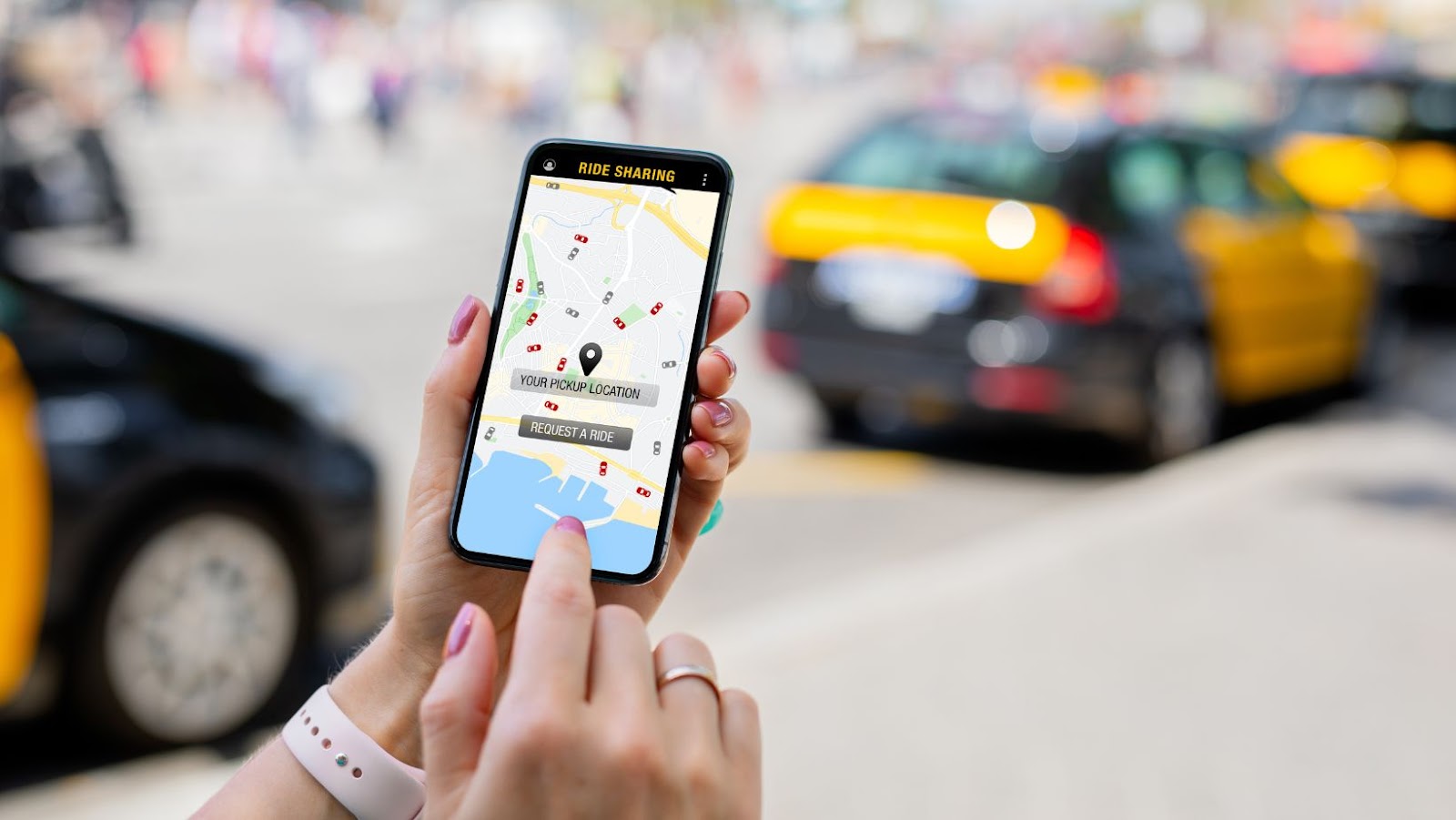In a major move in the grocery industry, Uber has announced a partnership with the retail giant Albertsons. The new agreement will make it easier for customers to order grocery items from Albertsons stores. This partnership between Uber and Albertsons could have broad implications.
In this article, we’ll look at what this move means for Uber and what it could mean for the grocery industry.
Uber Makes Major Move in Grocery, Partners With Albertsons
In June 2020, Uber announced their largest investment to date with their purchase of a large stake in the grocery delivery startup Cornershop. Cornershop is Latin America’s most successful grocery delivery platform, operating in over 500 cities across Chile, Mexico and Peru.
This move offers Uber access to an estimated $1 trillion Latin American food and grocery delivery market. This strategic acquisition also gives Uber a foothold in key markets outside North America and Europe, allowing them to expand their reach into growing, more profitable regions.
Cornershop will keep its name and continue to operate independently within the Uber family of companies. However, this move is expected to result in further investments by Uber across Latin America with apps like Cornershop Plus offering customers access to more goods than previously available.
Furthermore, this move signals a larger shift as companies increasingly join forces against rivals like Amazon and Walmart, battling for dominance in the competitive digital retail market. With increased funding from deals like this one, we may soon see more acquisitions by tech giants aiming to gain a competitive edge over each other.
Impact on Uber
Uber recently announced a big move in grocery delivery by partnering with retail chain Albertsons. This is a major move by Uber as they try to further expand their reach in the grocery delivery market.
But what does this news mean for Uber, and what kind of impact will this collaboration have in the coming weeks and months? In this article, we will discuss the implications of this new partnership on Uber’s business and its prospects in the grocery delivery market.
Increase in customer base
Uber is a ride-hailing company that has been providing convenient and affordable transportation services to millions of customers in cities around the world since its launch in 2009. With an innovative business model and a comprehensive customer experience, Uber has seen an unprecedented increase in its customer base. Today, Uber boasts more than 77 million users worldwide.
The company’s customer base expansion can be attributed to several factors, including the ever-growing use of technology such as smartphones, tablets and wearables; the proliferation of Uber’s core value proposition – convenience and affordability; the introduction of ridesharing services; and the evolution of social media which has further amplified Uber’s presence across all digital channels.
In addition to these digital advances, other key developments have contributed significantly to Uber’s customer base growth. This includes a rapid expansion into new markets through strategic partnerships with governments and other entities and numerous initiatives designed to ensure customer safety such as background checks on drivers. Such efforts have enabled a broader consumer appeal for Uber services internationally and increased confidence in the company for existing customers and new users.
Uber’s continuous investment in technology advancement has provided unparalleled convenience and cost savings to travellers worldwide leading to an exponential growth in customer base over the years.
Expansion of services
With the inclusion of Uber Eats and Uber Freight services to its portfolio, Uber has created a wider range of opportunities for its customers. This expansion has enabled Uber to become an even more significant contributor to the local economy, providing jobs for drivers and restaurant workers and connecting farmers with local markets.
In addition, the expansion of services enables customers to utilise the platform more conveniently. With so many options available, users benefit from access to different products such as groceries, meals or transportation within a single app. This also increases engagement with multiple service offerings and provides additional value to riders and businesses using the platform.
By broadening its scope of operations worldwide beyond ride-hailing services – through features such as Uber Eats food delivery; acquisition of Careem; Jump bike rental program; business-to-business freight services; and an array of other initiatives – they are continuing on the path towards becoming a one stop shop for all kinds of travel needs.
Boost in revenue
Over the past few years, Uber has seen a considerable boost in its revenues thanks to its innovative approach towards ride-hailing. This rise in revenue can be attributed to several factors including investment from venture capital firms, the inclusion of services such as Uber Eats, and popular membership discounts.

Uber’s ability to consistently provide reliable service and enter new markets has also allowed them to achieve a high level of customer loyalty. This loyalty has been fostered by allowing customers to use the same payment options for different services like Uber Eats or jump rides, having customers reward programs, and offering promotional deals such as discounts on longer trips.
Additionally, Uber’s willingness to disrupt traditional industries by connecting employers with employees through job listings or proposing self-driving car technology means that they have constantly remained ahead of the curve when it comes to their competition — bringing attention and investors their way. Overall, this strategic approach combined with a good customer service model have contributed most significantly towards raising the company’s overall revenues.
Impact on Albertsons
Recently, Uber made a major move in the grocery sector by partnering with Albertsons. This new partnership will allow Albertsons to leverage Uber’s delivery network and expand their reach. But what does this mean for Albertsons?
Let’s look at the potential impact on Albertsons’ bottom line.
Increase in customer base
The introduction of Albertsons to the market has greatly impacted the grocery industry. Albertsons is a nationwide supermarket chain that provides customers with competitive prices, quality products, and convenient store locations. As a result, they have seen an increase in customer base.

Albertsons’ customer base includes budget-conscious families and health-conscious individuals looking for organic and natural foods. They also offer exclusive items in certain markets which help to draw in new customers. If a customer is looking for something specific or unique, they can often find it at Albertsons instead of other local stores. Along with their low prices and convenient locations, they also provide special promotional deals and loyalty rewards, which further incentivizes shoppers to choose them over other options.
Furthermore, Albertsons has made efforts towards increasing their online presence by introducing an online delivery service where shoppers can purchase goods from the store’s website and have them delivered straight to their doorstep. This creates more convenience for customers who are too busy or unable to make it out to the store and significantly increases the size of their customer base.
Overall, the introduction of Albertsons into the market has had a positive effect on its customer base by providing shoppers with conveniences such as low prices, convenient locations, loyalty rewards, special promotional deals and even an online delivery service that allows customers to purchase goods without having to leave their home or office.
Expansion of services
Albertsons, one of the nation’s leading grocery store chains, has expanded its services recently. The chain has been scaling up its delivery and in-store pickup services and online ordering capabilities. In some markets, Albertson’s is experimenting with new “click and collect” services where customers can purchase items online and pick them up at a nearby store.
Additionally, Albertson’s is working to improve store shopping experience. From remodelling their locations to creating new customer service initiatives, the chain strives to enhance customer satisfaction by streamlining the shopping process. Albertsons also leverages digital self-checkout machines and artificial intelligence for lower wait times and faster checkout processes.
In sum, Albertsons isn’t just competing on price – it’s also striving to compete through superior convenience and customer experience. As it expands its services, Albertsons will better meet the needs of today’s on-demand shoppers.
Boost in revenue
The news of Albertson’s planned merger with the third largest US grocery chain, Rite Aid, is significant for Uber. It has the potential to generate a considerable increase in revenue for Uber. The merger of two large-scale companies will likely create an influx of customers for food and transportation delivery services. This order boost could offer life-changing job opportunities for individuals looking to make money but do not necessarily have the skills necessary to work in a local grocery store.
Uber’s subsidiary, Uber Eats, stands to benefit from Albertsons’ expansion as they have established their food delivery service. They will be able to supply customers with deliveries from Grocery stores that are now under the umbrella of the larger corporation. Additionally, Uber will have access to consumer route and address data, allowing them to plan out efficient delivery routes and potentially maximise profits on their orders – which is certainly good news for Uber drivers and companies alike!
This development also opens up potential partnerships between these giants to share resources, business models and ideas that could unlock new public value – boosting sales and sustainability initiatives between Albertsons and Uber. Moreover, it allows them to tackle existing challenges such as road overcrowding due to peak demand periods or traffic problems by developing optimization algorithms that consider existing traffic patterns when creating efficient routes for their drivers.
Ultimately, this union presents immense possibilities that both parties should explore further to capitalise on this momentous occasion.
Impact on the Grocery Industry
Uber made a major move in the grocery industry when they recently announced their partnership with Albertsons, the second largest grocery chain in the US. This partnership could revolutionise the grocery industry, changing how people shop for groceries forever.
In this section, we’ll look at the impact that this move could have on the grocery industry.
Increased competition
The grocery industry has experienced an increase in competition in recent years. Primarily, this has resulted from the emergence of new players and the expanding presence of existing ones. As a result, companies like Amazon and Walmart have made tremendous strides in gaining market share, while Whole Foods and Aldi have grown tremendously.

In addition to larger stores, numerous convenience-store-style outlets have appeared nationwide. Specialty stores such as Trader Joe’s also pose a threat—claiming more high-end customers with their organic and healthier items. Moreover, supermarkets are no longer limited to large grocers. Still, they are being supplemented by smaller local chains, businesses offering home delivery, members-only grocers offering discounts, direct farm-to-table services from local farms or markets that allow customers to purchase online or over the phone and pick up at their local store. The increased variety of consumer options makes it more difficult for traditional grocers to maintain customer loyalty and market share.
The combination of sales through physical stores and digital transactions has also led to intense competition among those trying to capture a larger portion of the grocery market. Companies like Instacart are attempting to dominate the field by making it easier than ever for customers to shop online and receive groceries within a few days without leaving their homes. In addition, budget friendly meal kits like Blue Apron offer an easy way for people who need assistance with meal planning or don’t want to waste time shopping for ingredients at multiple stops—a further challenge for established grocers competing within this space.
Changes in customer preferences
The changes in consumer preferences are having a major impact on the traditional grocery industry. Customers now prioritise convenience and variety, demanding access to fresh and pre-made products, and seeking personalization solutions. With this shift, the focus for grocers must shift from mass production to personalised customer experience and product selection to remain competitive in the market.
Grocery stores need to be more responsive to changing consumer needs while offering constant quality assurance – which can be difficult due to shortages of required supplies or ingredients due to global supply chain issues. The industry also faced huge challenges in 2020 due to the pandemic, including reduced store traffic, increased demand for online delivery, reduced store hours or temporary closures, and the elimination of loyalty programs.
In addition, consumer preferences are reflecting an increasingly health-focused lifestyle – whether it’s organic produce or vegan-friendly items. To accommodate these tastes while staying current with modern trends, establishments have begun sourcing products from local suppliers instead of distant producers with whom they were familiar before the pandemic hit.These changes come with numerous implications – from staffing policies to how consumers interact with store products.
Another trend identified during this new normal is that customers are becoming more discerning about their food choices regarding quality and sustainability considerations such as packaging waste reduction initiatives during order fulfilment. As such, grocers need to consider ethical business practices when deciding which items should be available for online and offline purchase. Furthermore, major supermarkets and discount store retailers have begun implementing mobile applications which act as a dashboard for their customers’ shopping experiences inside their respective physical locations – allowing them to quickly explore what they’re looking for valid discounts available at any given time frame when visiting actual brick-and-mortar addresses.
Impact on pricing
The grocery industry has experienced several changes due to the COVID-19 pandemic. One of the most significant changes that have had an impact on grocery stores is pricing. Many grocery stores, particularly those part of a chain, have had to raise prices due to higher costs from suppliers. These cost increases are being passed along to consumers through higher prices for items such as dairy, meat, and produce. Additionally, many stores are instituting limits on certain items to prevent hoarding and protect customers from being able to purchase too much of an item at once.
These changes have had both positive and negative impacts on the industry. On one hand, they have helped keep stores supplied as manufacturers increase their production capabilities to meet demand; however, at the same time, it has been difficult for customers to get accustomed to having limited access and paying more for groceries than before the pandemic. This has created additional challenges for those already struggling economically before COVID-19 hit.
tags = uber, uber partnership, albertsons, San Francisco, New York City and Washington D.C., grocery delivery, uber us albertsons companiesholtengadget, Albertsons’ banner stores, Uber and Instacart
